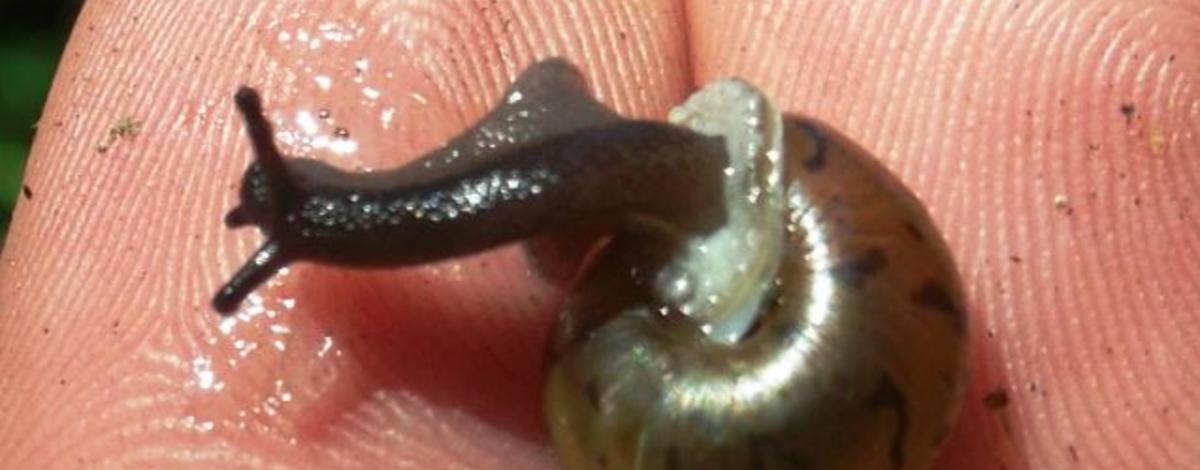With over 1500 surveys to conduct this summer MBI field crews are already efficiently moving through the survey grid.
Two types of survey are done in each of our 849 5x5 km survey grids: wetland and terrestrial.
First things first, IDFG Wildlife Technician Mollie Wiebush takes a photo of a wetland as we do at each survey site.
The perimeter of each wetland is dip-netted as IDFG Senior Wildlife Technician Stephanie Cobbold demonstrates here.
Amphibians, like these long-toed salamander larvae, are identified and genetic samples are taken.
Micro-climate data loggers are set up at all terrestrial and select wetland sites. IDFG Senior Wildlife Technician Jamie Utz is pictured below a radiation shield she installed to protect the data logger from direct sunlight. This data logger will record temperature and relative humidity every 90 minutes for a year.
There are three cardboard gastropod traps at each terrestrial site. Each trap is soaked in beer and left on the forest floor for about 2 weeks. This picture shows Jamie carefully examining the trap for tiny snails and slugs.
Care must be taken because some of our target Species of Greatest Conservation Need (SGCN) are very small, such as this pygmy slug. You can see it just to the right of the staple.
Snail taxonomy is complex. While this Cryptomastix spp. is easy to identify to genus in the field...it was collected to be identified later by an expert so we can see if it's one of our target SGCN.
We look for gastropods on the traps, in timed searches (under rocks and logs), and just in case we miss any we collect a quart of leaf litter at each terrestrial site. Later on we sort through the litter to find tiny snails. Notice how the leaf litter layer in this this forest is shallow and therefore not a big fire danger? You can thank a snail for that!
Each terrestrial site also has three beetle pitfall traps. Each trap is drained and the beetles are dried out to be identified later.
The pitfall traps are also great rain gauges! We measure the amount of water the accumulated in each pitfall trap during the two weeks it was in the field.
IDFG Wildlife Technician Chris Boulden takes down a funnel trap. We put these out at our intensive terrestrial survey plots to collect flying insects. Mistaking the traps for a tree, the insects try to land and then fall to the bottom of the trap.
In this trap Chris caught 2 moths, 1 wasp, and 1 beetle.
Insect samples are kept in coin envelopes until they can be identified by experts.
The logistics of getting technicians to so many survey sites across the study area involve lots of driving and hiking. This involves a lot of work, but also a chance to see some great country. You never know what you'll find in a day, such as the armload of Bolete mushrooms Chris found near a terrestrial site and used to supplement his IDFG provided camp groceries that evening.

